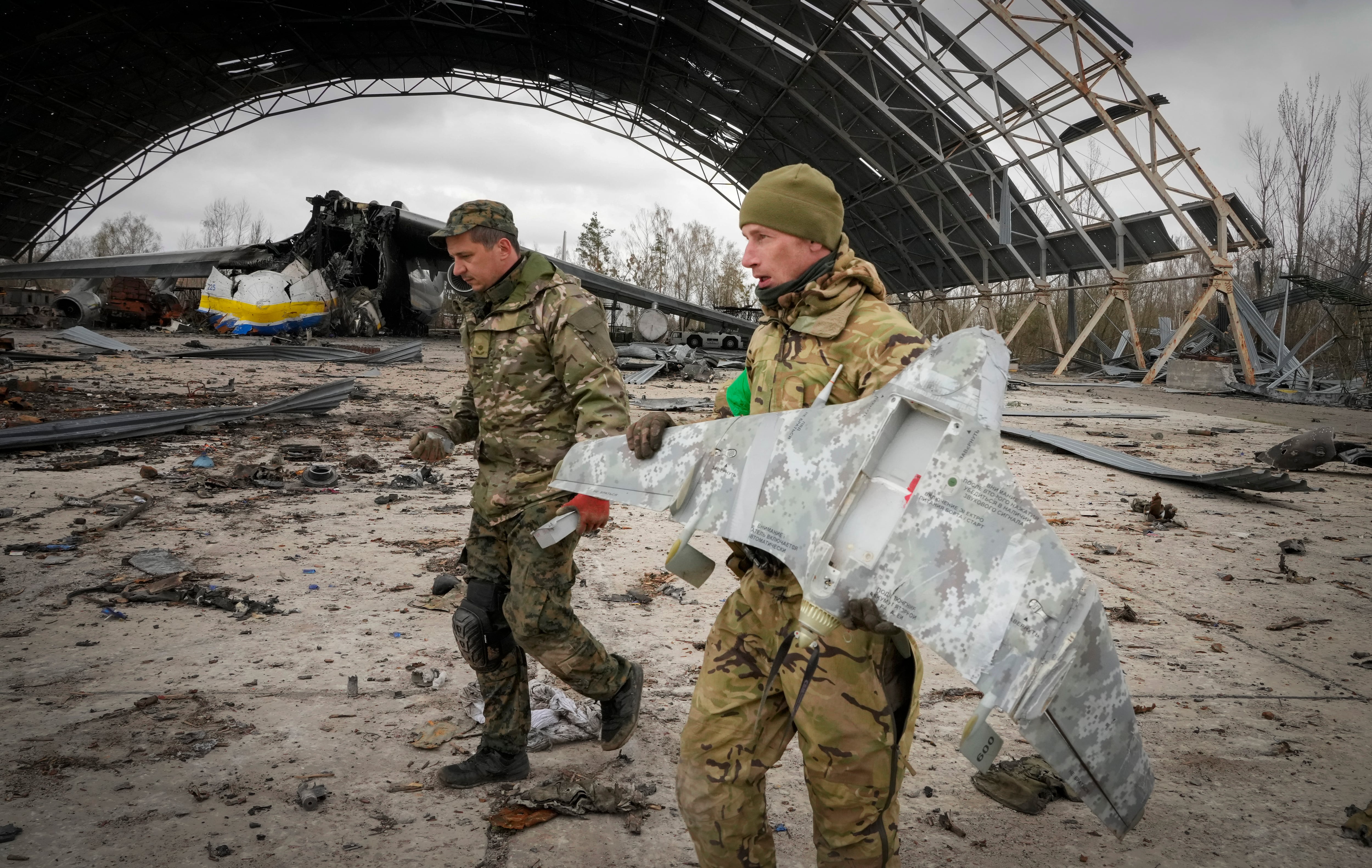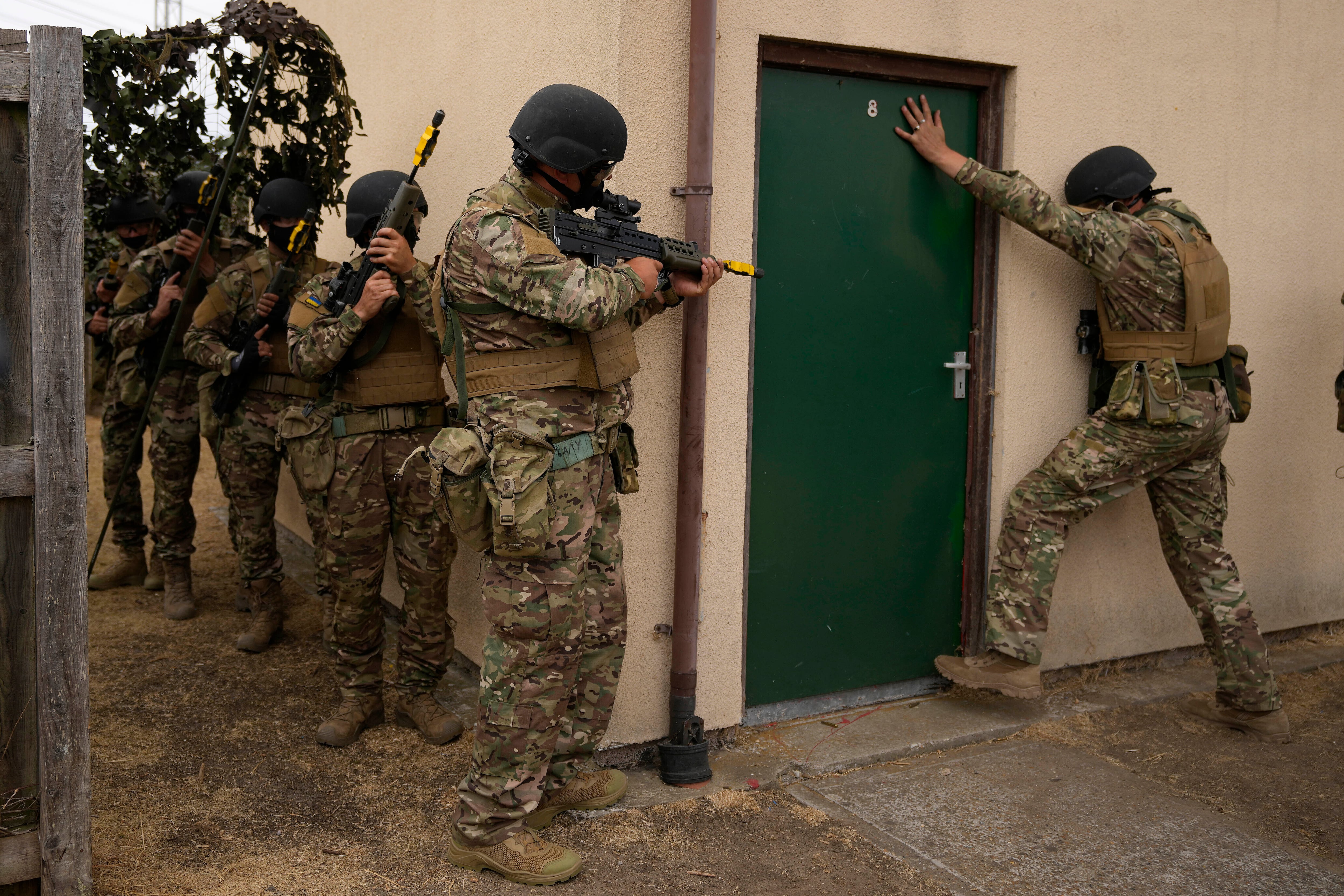WASHINGTON ― With a new $2.98 billion weapons and training package for Ukraine’s military, the Pentagon wants Russian President Vladimir Putin to know it plans to support Kyiv for the long haul.
The Pentagon will buy newly announced air defense systems, counter-drone systems, radars, artillery systems and munitions from industry over months and years ― with Ukraine Security Assistance Initiative funding and apart from billions in equipment it has sent Ukraine from its stockpiles.
“Vladimir Putin seems to believe that Russia can win the long game, outlasting the Ukrainians in their will to fight and the international community’s will to continue to support Ukraine,” Colin Kahl, undersecretary of defense for policy, said at a press briefing. “This USAI package is a tangible demonstration that this is yet another Russian miscalculation.”
The package, which marks the single largest tranche since Russia launched an invasion of Ukraine six months ago, includes six more of the National Advanced Surface-to-Air Missile Systems with additional ammunition. Last month, the U.S. committed to two of the systems, developed by Norway’s Kongsberg Defence and Aerospace as well as American company Raytheon Technologies.
Also included are Vampire counter-unmanned aerial systems, more Puma drones and support equipment for ScanEagle drones. The Pentagon did not disclose the manufacturer, but Kahl said the Vampire “is a kinetic system that uses a small missile, essentially, to shoot UAVs out of the sky.”
RELATED

While both sides are using thousands of drones, with the United States and Russia each signaling more are on the way, the conflict has mostly centered on artillery in recent weeks.
The new package includes up to 245,000 rounds of 155mm artillery ammunition; 65,000 rounds of 120mm mortar ammunition; up to 24 counter-artillery radars; and unnamed laser-guided rocket systems. Politico reported that the U.S. plans to send the M982 Excalibur, which is a laser-guided projectile made by Raytheon.
Funding for training, maintenance and sustainment was also included in the package.
According to Kahl, Defense Secretary Lloyd Austin, the Joint Staff and U.S. European Command have worked with Ukraine’s government to form a plan for what its “future forces” will look like, cognizant of what Ukraine can afford and sustain. The aid is meant to be useful to keep fighting or, after a settlement, deter Russia.
“The capabilities here are really aimed at getting Ukraine what they’re going to need in the medium to long term so it’s not relevant to the fight today, tomorrow or next week. It is relevant to the ability of Ukraine to defend itself and deter further aggression a year from now, two years from now,” Kahl said.
Asked whether Ukraine would be weaned from Russian systems onto NATO-compatible equipment in three years, Kahl said Ukraine could hang onto its many legacy artillery systems. A gradual transition is underway, however, and Ukraine is using western howitzers.
Some 50 countries have provided urgent military aid, but ideally in the long term, Kahl said, “the Ukrainian military of the future will not be rooted in dozens of different systems, but a much smaller number of systems that are easier to sustain and maintain.”
RELATED

Wednesday’s announcement came as Ukraine readied for intensified Russian attacks to coincide with Ukraine’s Independence Day and the six-month point from the start of Russia’s further invasion of Ukraine.
“Over the past six months, Ukrainians have inspired the world with their extraordinary courage and dedication to freedom,” U.S. President Joe Biden said in a statement to announce the package.
“They have stood resolute and strong in the face of Russia’s full scale invasion of Ukraine,” he added. “And today is not only a celebration of the past, but a resounding affirmation that Ukraine proudly remains ― and will remain ― a sovereign and independent nation.”
The previous U.S. aid package to Ukraine, announced Friday, marked the first time Washington had pledged ScanEagle drones, for targeting artillery, as well as 105mm howitzers and anti-tank rounds for the Carl Gustaf rifle.
That tranche also included the AGM-88 high-speed, anti-radiation missile, which will allow Ukrainian forces to target Russian radars in the artillery-focused war. According to Kahl, the HARM system was modified to fire from Ukraine’s Russian-made MiG-29s.
Wednesday’s package is part of the $40 billion in security and economic assistance passed by Congress and signed into law in May. It is the 20th package of military weapons and equipment committed to Ukraine since the war began Feb. 24.
Joe Gould was the senior Pentagon reporter for Defense News, covering the intersection of national security policy, politics and the defense industry. He had previously served as Congress reporter.







